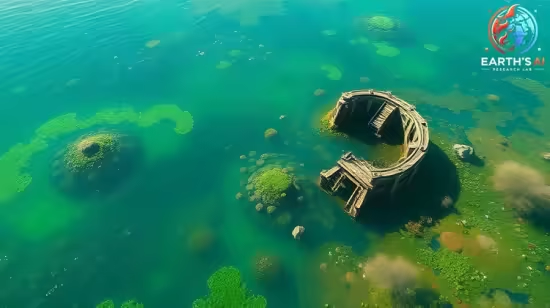Water Quality Monitoring Using Remote Sensing and GEE
Monitor Water Quality Using Sentinel-2 Satellite and Google Earth Engine
What you'll learn
Understand the basic principles of remote sensing and its relevance to water monitoring.
Learn key water quality parameters and their environmental significance.
Calculate NDWI, NDCI, and turbidity indices using Sentinel-2 data.
Develop and export water quality maps using Google Earth Engine.

Requirements
No prior experience with Google Earth Engine is required — the course will guide you step-by-step.
Description
This course offers a comprehensive, hands-on introduction to monitoring water quality using satellite remote sensing data, focusing on Sentinel-2 imagery and Google Earth Engine (GEE). Designed for researchers, professionals, and students in environmental science, agriculture, geography, and remote sensing, the course covers the full workflow—from understanding spectral band properties to applying advanced water quality indices.
You will start with an overview of Sentinel-2’s high-resolution multispectral bands, emphasizing their relevance for aquatic environments. The course explores key water quality indices such as the Normalized Difference Water Index (NDWI) for water masking, the Normalized Difference Chlorophyll Index (NDCI) as a proxy for chlorophyll-a concentration, and turbidity proxies derived from Red and Green band ratios.
Each index is explained in terms of its spectral basis and environmental significance.Using Google Earth Engine’s cloud computing platform, learners will gain practical skills to access, filter, and process large Sentinel-2 datasets efficiently. You will learn how to mask clouds, extract regions of interest, compute indices, and visualize results on interactive maps. The course also covers exporting processed images for further analysis.
By the end of the course, you will be equipped to implement water quality monitoring projects, leveraging open satellite data and scalable cloud tools. This knowledge empowers you to contribute to water resource management, environmental monitoring, and research initiatives using state-of-the-art remote sensing technologies.
Who this course is for
Students, researchers, and professionals in agriculture, environmental science, geography, or remote sensing looking to apply satellite data in real-world water quality monitoring scenarios.
Published 7/2025
MP4 | Video: h264, 1280x720 | Audio: AAC, 44.1 KHz, 2 Ch
Language: English | Duration: 1h 7m | Size: 345 MB
Download
http://s9.alxa.net/one/2025/07/Water...ng.and.GEE.rar
Monitor Water Quality Using Sentinel-2 Satellite and Google Earth Engine
What you'll learn
Understand the basic principles of remote sensing and its relevance to water monitoring.
Learn key water quality parameters and their environmental significance.
Calculate NDWI, NDCI, and turbidity indices using Sentinel-2 data.
Develop and export water quality maps using Google Earth Engine.

Requirements
No prior experience with Google Earth Engine is required — the course will guide you step-by-step.
Description
This course offers a comprehensive, hands-on introduction to monitoring water quality using satellite remote sensing data, focusing on Sentinel-2 imagery and Google Earth Engine (GEE). Designed for researchers, professionals, and students in environmental science, agriculture, geography, and remote sensing, the course covers the full workflow—from understanding spectral band properties to applying advanced water quality indices.
You will start with an overview of Sentinel-2’s high-resolution multispectral bands, emphasizing their relevance for aquatic environments. The course explores key water quality indices such as the Normalized Difference Water Index (NDWI) for water masking, the Normalized Difference Chlorophyll Index (NDCI) as a proxy for chlorophyll-a concentration, and turbidity proxies derived from Red and Green band ratios.
Each index is explained in terms of its spectral basis and environmental significance.Using Google Earth Engine’s cloud computing platform, learners will gain practical skills to access, filter, and process large Sentinel-2 datasets efficiently. You will learn how to mask clouds, extract regions of interest, compute indices, and visualize results on interactive maps. The course also covers exporting processed images for further analysis.
By the end of the course, you will be equipped to implement water quality monitoring projects, leveraging open satellite data and scalable cloud tools. This knowledge empowers you to contribute to water resource management, environmental monitoring, and research initiatives using state-of-the-art remote sensing technologies.
Who this course is for
Students, researchers, and professionals in agriculture, environmental science, geography, or remote sensing looking to apply satellite data in real-world water quality monitoring scenarios.
Published 7/2025
MP4 | Video: h264, 1280x720 | Audio: AAC, 44.1 KHz, 2 Ch
Language: English | Duration: 1h 7m | Size: 345 MB
Download
http://s9.alxa.net/one/2025/07/Water...ng.and.GEE.rar